I always thought I was creative. Because I liked clothes and film and music, and occasionally visited galleries and took pictures of the piece that might translate best to my Instagram grid, I thought that made me creative. Yes, I work a corporate job, but look at my multiple piercings! My free time must be abound in creative pursuits.
I thought my ideas made me creative. I kept a notebook and jotted down and sometimes even started projects including:
A less stuffy golf brand named “Gimme Golf” (2015)
A screenplay about an inheritance-fueled locked-room murder mystery at a family reunion in Maine (2016)
A screenplay about a group of criminals who slowly turn on each other after a successful heist (2024)
A podcast called “Bed Talks” where I interview the guest of the week in bed (2016)1
A pop culture blog called “Back Row Banter” (2018)2
A TikTok dating show where I drive an Uber and pick up a contestant and three different potential love interests. At each stop the contestant has the option to get out of the car and go on a date, ending the show. I also hit on the contestants and have a British accent and a comically large fake mustache (2024)3
A closed-door murder mystery novel set at a tech company off-site (2025)
All of these projects have reached various stages of non-fruition; a first draft here, a logo mockup here, a series of increasingly manic voice notes containing plot points and twists there. But they all still don’t exist, just scribbles on a notebook.
But there are good ideas here, I’d think. I could do something with this, if I really wanted to. The threat of creative output was enough for me, I stood spotted up on the three-point line ready to shoot but secretly praying the ball didn’t find me. Everyone has creative impulses, the inspiration to write, draw, record, or just imagine something that doesn’t yet exist. But very few have the tenacity or self-importance or nerve or whatever to actually put something out.
Culturally, we ascribe the lightbulb moment when an idea emerges, immaculately conceived, as the peak of creative inspiration. Like Harry Potter popping into JK Rowling’s head, or me realizing that “productivity” kind of sounds like “pro-duck-tivity” and wouldn’t it be funny if there was “progoosetivity”, the moment a concept, joke, etc materializes is where the magic happens.
But I’d posit idea generation is actually the least creative part of the creative process. In all the examples above; I’d scribble down a vague premise, close my notebook, clap my hands together and say voila, my very creative work here is done. Then I’d go buy a $7 chai. This part — idea generation — is what LLMs actually excel at; creating shells or structures for people to execute within. Especially working with a self-referential medium like film, ChatGPT has no issue coming up with reasonable premises for a rom-com.
I do prefer my own though…
In the pre-LLM era, this list might have existed on a page in one of my abandoned notebooks. And I’d sit there and think I was creative because only I could have come up with something as fucking unique as a murder mystery centering around a well-off, eccentric family.4
I used to think of creative work as inside-out, the work is considered before the product. Now that’s inverted. In the past I’d write something, weaving and changing it along the way; now I need to know the logic end point or shell before I fill in the details. Creative work becomes a commercial pitch. Write me You’ve Got Mail meets Notting Hill. Take the info from everywhere and everyone and mash it together, if we can’t recognize the parts we can’t understand the whole.
AI lowers the barrier to entry for producing creative work. This much is true, that I now have an easier time executing on the ideas that slumber in the margins of journals and the Notes app and conversations on rooftops. In the example above, I don’t even need an idea so much as a point of reference—I like this creative product, make me one just like it; I like your dog, where can I get one.
Is lowering the barrier to entry here a mistake? There is already so much content, so much content that maybe it should be harder to make it? Like if we weren’t so content-reliant, maybe every Sunday the 10 TikToks from that week would release and we’d all gather round and watch, then go to a bar or a park and talk.
I don’t enjoy writing. It’s not a fun experience for me, and sure, it would be nice to type in a prompt and watch my ideas cohere in front of me, watching ChatGPT type away like I watch cookies in the oven, nervous they aren’t flattening in quite the way I want. Writing is so painful to me that I physically can’t do it unless I feel like I need to. Like my intellectual or emotional constipation is reaching some breaking point.
I don’t know what I truly think about a topic, a moment, a person, an experience, an idea, etc, until I write about it. Even writing this, I’ve changed my mind a few times in subtle and unsubtle ways. Isn’t that what creativity is about, discovery? Dragging yourself through the mud of execution, line by line, until you look back and realize the shell of what you set out to do has evolved in some surprising way.
This process is why I’ve never understood the concept of a thesis. Why, in academic contexts, are we asked to nail down our argument before even slightly looking into it. In college, I’d frequently reverse-engineer my essays; starting a vibes-based opinion, then using the advanced search feature on JSTOR, finding 5-8 historical artifacts that completely supported my thesis. As long as I quoted a couple of “key words and [cited] the author at the end, it was [all good]” (Handsome 34).
AI-augmented writing works a similar way, turning the act of research and discovery into an act of thesis tweaking just like the worst academic writing does. There’s nothing to uncover when I can turn a vague and undercooked one-sentence argument into an overcooked opinion meatloaf sourced from all corners of the internet. Instead of writing and finding plot points and twists on the side of the road, use AI and turn the process into a choose-your-own-adventure book that self-completes. Twistier please. Sexier please. Re-write to make the troubled nephew the killer. Thanks. Always say please and thank you, there are thousands of writers, dead and alive, on the other side of the screen.
And sure, the line between what’s creative and what’s imitative has long been blurry. Musicians are constantly suing each other over sample clearance, riff stealing, and what constitutes Fair Use. The key in these Fair Use cases is the distinction between transformative use and reproductive use. What’s defined as transformative is subjective, but I’d sum it up as: is the purpose of Content A as used in Work B significantly different from the purpose of Content A in Work A (the original work). Simplest example would be in film parodies like Scary Movie, recreating iconic horror scenes with comedic twists and timing clearly intended to make the audience laugh.
So far I’ve had a hard time placing where AI might fall on the Fair Use spectrum. The examples I encounter on social media, usually some tech-types being like “Creativity has been democratized 🚀🚀🚀🚀🚀🚀,” and it’s a clip of an-AI generated freckled woman leading you to an inconceivably blue ocean like the beginning of a 2014 Jay Alvarez video. I saw a thread (that I refuse to link for ethical reasons) that animated about ten seconds of Severance in different styles—Ghibli-esque, Wallace and Gromit inspired claymation, etc. On first glance, this was delightful. Holy fucking shit, Irv is made of clay! But ultimately, these images are reproductive, a paper-thin casing that relies upon our existing affiliations and affections, less a transformation and more of a snapchat filter.
Do any of these images have anything new to say? Re-contextualize the relationship to the characters, or offer a critique or parody of some kind? No, it’s just another way to say, “Hey remember this show? That we all watch? Engagement, please?”
And yes, from a technical perspective some of this shit is cool. But when I see another, “What if the camera in this iconic scene was moving” viral post, all I can think is; dawg, if the director wanted the camera to move he would have moved it! Art is aesthetics plus intent. Without intent you have nothing, an empty husk.
I had a nightmare where the witches who usually chase and murder me (live-action) were replaced by witches who still chase and murder me, but were animated in the style of Studio Ghibli.5 I know this was a side-effect of a full week and change of viewing Ghibli-fied everything, first on my Twitter timeline then eventually Instagram. The Ghibli timeline takeover happened in three distinct waves.
Photos of loved ones Ghibli-style
Well-known memes Ghibli-style
The fucking official White House account posts a Ghibli-fied rendering of a woman, convicted of fentanyl trafficking, getting deported6
I enjoyed wave one, renderings of people I do or don’t know, or their dogs (preferably their dogs), made me grin7 more often that not. It was however of slight concern that arguably the most iconic animation style was being turned into a Snapchat filter in real-time, but alas, I didn’t really mind.
Wave two was less enjoyable, the predictable wave of the content creator and engagement farming class nuking GPUs to create Ghibli-versions of familiar images. This struck me as more perverse, applying the distinct style of something so absolutely made-by-hand to turn your memes into memes. In the same way running a photo through this filter creates a moment of personal nostalgia, applying this to tentpole internet images felt like the unholy incubation of cultural nostalgia. Remember when Ben Affleck was sad smoking a cig? Well now you will because it’s animated. Likes please!
The posts that did numbers just resurfaced cultural touch-points, with no commentary besides; hey, remember this moment? What if it looked like someone had painstakingly illustrated it? Personal or non-personal, these use cases are democratizing nostalgia, not creativity.
By the time this shit got to the official White House Twitter account posting a photo of a woman getting deported this shit was cooked. Is there a correlation between creative accessibility and a reduction in media literacy? If the cursed White House social media intern had to draw the image, instead of using a prompt, surely they might pick a style of illustration that makes the subject of their ire less sympathetic, surely they might stop and think, wait, what are we actually saying here?
What will this new frontier of creative work at scale mean for consumers? For many, it won’t matter whether or not a real person drew or animated or wrote something, it’s just product; product that flows through thousands of invisible nodes before reaching one of their screens. And the applications are truly limitless; from a strangely beautiful Donald Trump Xue Hua Piao Piao cover, to the wonderful world of Italian brainrot, AI will increasingly influence mainstream culture and create countless micro-cultures of its own. And if it’s possible to opt-out of consuming AI-augmented work,8 what will that feel like? Like having a brick phone? Like living on a farm and only consuming grass-fed milk?
When demand for content seems infinite, creators are heavily incentivized to scale and optimize their work. I recently read an excellent, and worryingly almost three-year old article, about writers using AI-tools to more efficiently put out work. In the article, a fantasy author who makes a living self-publishing on Kindle “allots herself precisely 49 days to write and self-edit a book.” No shit she is using AI, 49 days is a fucking insane timeline to write a book. Apparently, in this ecosystem, readers expect a new novel every nine weeks, or are at serious risk of putting their time and money elsewhere.
This is the reality now for artists of all ilk trying to earn a living—high product output is essential. And it’s genuinely cool technology can enable people to sustainably tell stories as a full-time job. But readers want a new book every nine weeks, scrollers want a new TikTok every day; we are conditioned to want more and more, so much that a two-year wait for a new season of a television show I like feels excruciating.
Am I romanticizing art and creativity in a world without hyper-consumption? I think of creative work as inefficient and suboptimal and unprofitable, or at the least, not built for profit. But this is probably an oversimplified take from someone who obsesses over box office data—art has always been commercial. I think I just wish we made more room for art to be slow, to be culturally subsidized in some sustainable way. Or that an author could have time to go on a walk and see a leaf so red they jot down a quick description, rather than logging onto Sudowrite, hovering over the word leaf, hitting describe, and tapping their fingers until the program scours the web for descriptions of leaves, mashes them together, and spits something back out. It’s fine. For the reader, the leaf was never real anyways.
Maybe I’m just sensitive about writing because it’s part of my identity. But as soon as I use AI to scrape code or alter images it feels fine, it feels easy. My identity isn’t threatened by the fact that I slipped a sentence into a box instead of spending hours in Photoshop. I am by no means immune to these impulses. I’ve used AI-assistance to create cartoons for the Clinically Handsome Cartoon contest; because, historically, I cannot draw for shit.9 It’s sick I can type in a half-baked idea and a half-baked image emerges; but is it good? Is it me? The limitations of my own ability might force something more thoughtful or raw or interesting.
Most creative pursuits start, intentionally or otherwise, as rip-offs. Open mic’rs unwittingly do (poor) impressions of their favorite stand-ups and young writers ramble and footnote10 like David Foster Wallace. Everyone needs a reference point to get started. But with AI, there’s very little incentive to move beyond the reference point. Sure, I can generate an episode of Seinfeld where Jerry starts dating a girl who works at CHCM and delays breaking up with her because of the discounts, or a Andrzej Wróblewski style “painting” of my subway stop; but in my opinion, transcending these reference points in the long-term is damn near impossible if I’m not the one executing.
We might be looking at a creative future where new work never escapes its inspirations, where because everything is an amalgamation of what already exists, there’s no path to true originality in either spirit or form. Only through consistent and mundane execution does work start to transcend its origins, birthing the rarest element in creative work—a voice.
However, at minimum, artistic output is sold with a reference point. If I wrote a script and shopped it; I might say over a drink that it’s like “The Godfather meets Little Fockers,” and you, the seasoned film executive that you are, would smile and see fucking dollar signs. All art becomes product eventually, but with AI, it’s product from the moment you type in that prompt.
AI is technology the way my arm is technology, I could rock you in the face or hand your flowers. Tech-optimists envision a future where we are all editors, curators, and producers. Where, instead of pulling together janky lighting solutions for your DTC jewelry ad, you just need to think of the right phrase to tell your chatbot DP and your chatbot key grip and your chatbot craft services.
Of course there’s a skill to prompting—prompting is design in it’s own way, you need some amount of cultural and aesthetic literacy to get the results you want. You could argue that the new creative paradigm will reward thoughtfulness above all else, that the best and most novel ideas will be rewarded. But recent history says otherwise; content is king, not in terms of quality, but in terms of scale. When scale is incentivized, it’ll be harder and harder to distinguish what’s thoughtful or good or original as it disappears in a pile of every-increasing and indistinguishable slop.11
And if you put something out, AI-augmented or otherwise, your work will likely be added to the perpetual stew LLMs will simmer until the next poor sap types in “write me a heartfelt personal statement that a business school admissions officer would connect with based on the resume attached”. Chat GPT is Marty Wolf Pictures, except your words are being ripped whether you dropped them in the limo or not.
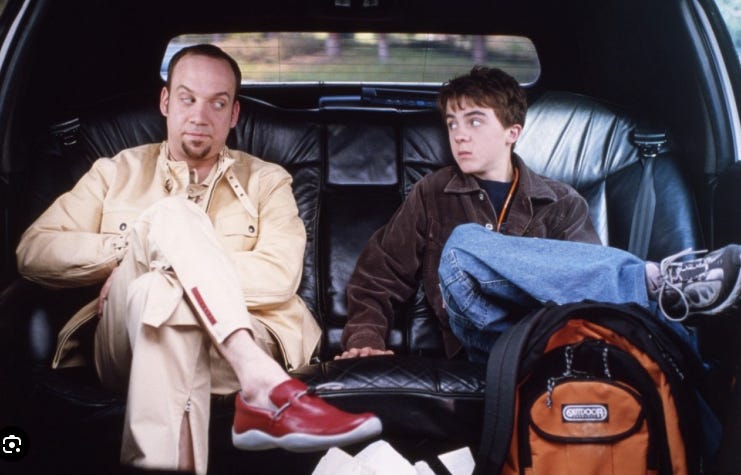
On the surface, most people probably don’t care how their art, content or whatever, gets to them. But I genuinely believe a high barrier to entry for creative work is felt by the end user. Take the Studio Ghibli example: would Hayao Miyazaki make a movie in his signature labor-intensive style if he felt lukewarm about the story?12 Probably not. And if I cared enough about the projects listed in the opener of this piece, really felt like I could not sleep, eat, or breathe without those stories or products making it to page or screen—I would have done it.
Somewhere in the liminal space between outlining and writing this piece, I attended an engagement party. A friend of the blog had a digital camera. Many photos were taken.
A couple weeks later, I spent a morning at work activating the nostalgia-center of the brain with Studio Ghibli versions of memes. Over the course of the day, I went from thinking it was cute, innocuous fun; to thinking it might be the end of art and expression as we know it. Everything was slop.
Then that evening, I got a text from said friend of the blog with a bunch of photos ranging from embarrassing and possibly socially damning for the author to very fucking fire. Then, without prompting, I got another notification. This buzz brought with it a photo of myself and two friends of the blog, but Ghibli-fied.
For a moment, all of my previously steeping takes13 faded out. Look at how it captured my purple suit, the pleats, the single fuckboi earring, the fact that my tie was done a bit loose or maybe it just gets like that at 4AM, the hair that in this form looks tousled on purpose.
It’s not like that other bullshit, see, it’s me! It’s me.
I love being wrong! If any AI-savvy friends of the blog think I missed the mark here, please bang my line at clinicallyhandsome@substack.com.
I’m stoked to write/think more about this topic in more concrete and applied ways, and would welcome any angle or insight you might have.
Ok this shit was fire but I made a logo before even recording an episode
Maybe unfair to include this, I actually posted on this blog for a year but was too embarrassed to share or promote it :)
I came up with this drunk on a rooftop last May and should probably revisit the idea, if anyone wants to produce lmk
Shout out Knives Out
Important way to get around AI-copyright moderation, as long as it’s “inspired by” you are good
Quick tip for the media-illiterate—when you want to make someone seem unsympathetic, making them cry doesn’t do it! There is nothing more sympathy-inducing than watching an animated character weep, go see Inside Out you fucking ghouls
Alone in my room its less of a teeth-showing vibe and more of a twitch
There’s another conversation to be had here about at what point something becomes AI-augmented and if it actually matters that it is. Like is the controversy over AI and The Brutalist overblown? Or are there legitimate concerns. I’m too sleepy at the moment to know
If you’ve ever received a card from me with an illustrated animal on it, just know my stupid ass googled “Otter cartoon tutorial SIMPLE” and followed the steps, I have no discernible artistic talent whatsoever. HOWEVER, I will be attempting a no-AI cartoon for the next go-around so stay tuned for that nonsense
hehehe
Italian AI brainrot is good. Just want to be on the record here
Caveat: in film this happens all the time FOR MONEY. Assuming as a GOAT, Miyazaki has a bit more creative control, and after watching the incredibly strange Boy and the Heron I doubt corporate interests are really driving story beats here
My brain is a large teapot




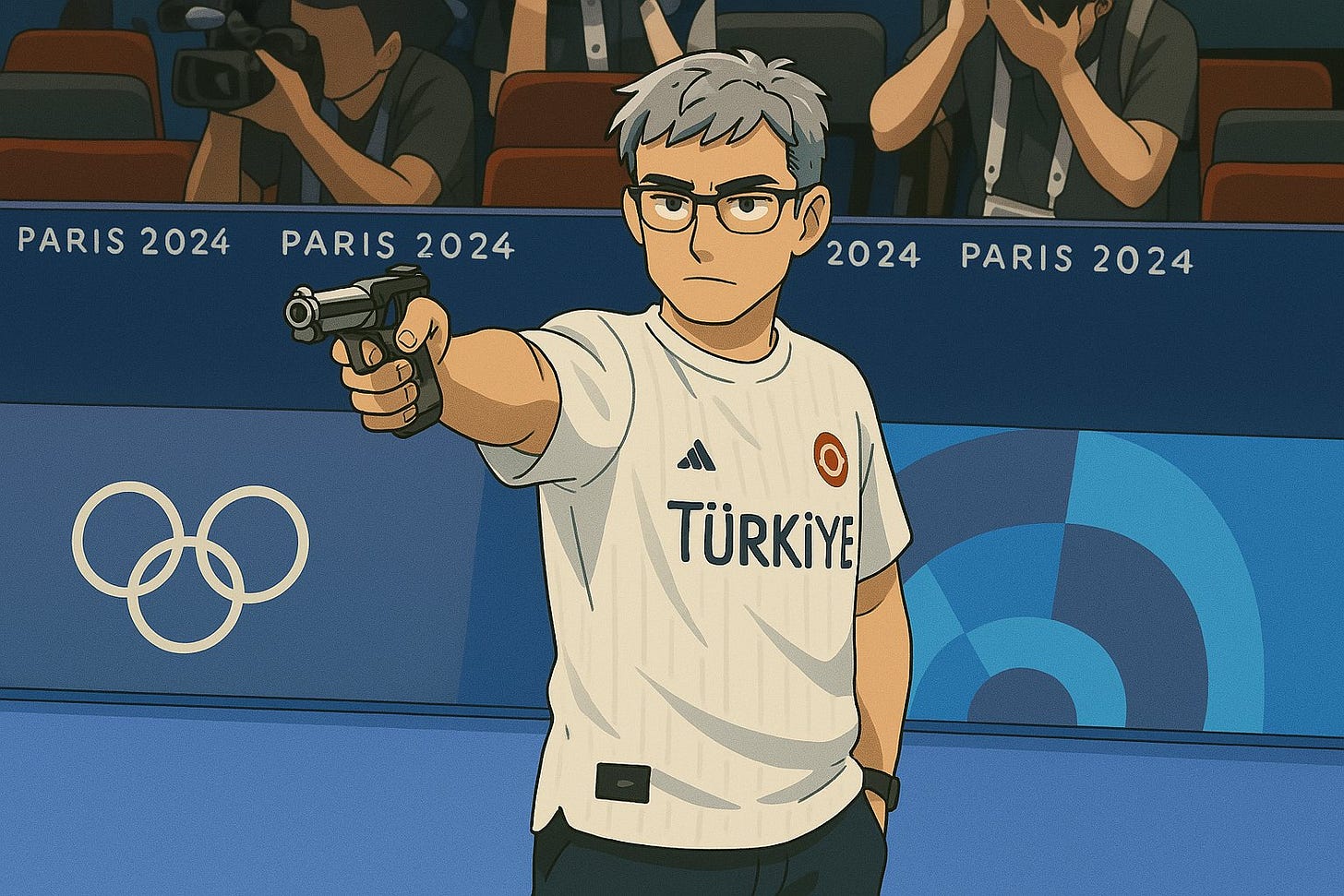


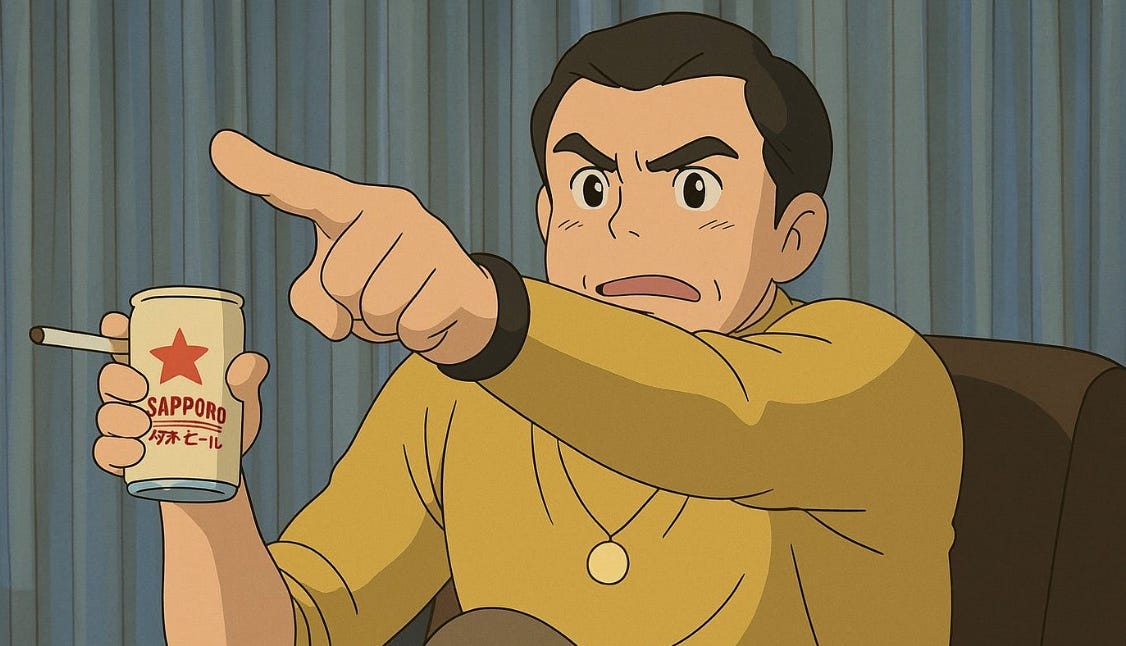


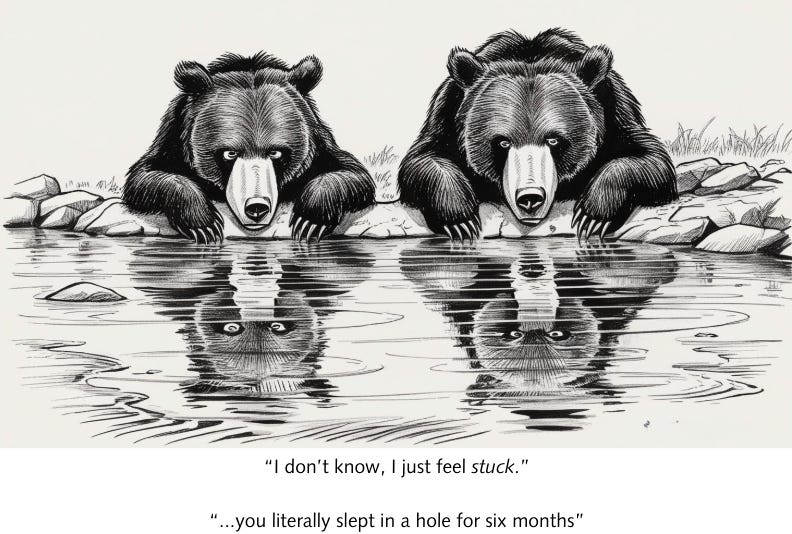
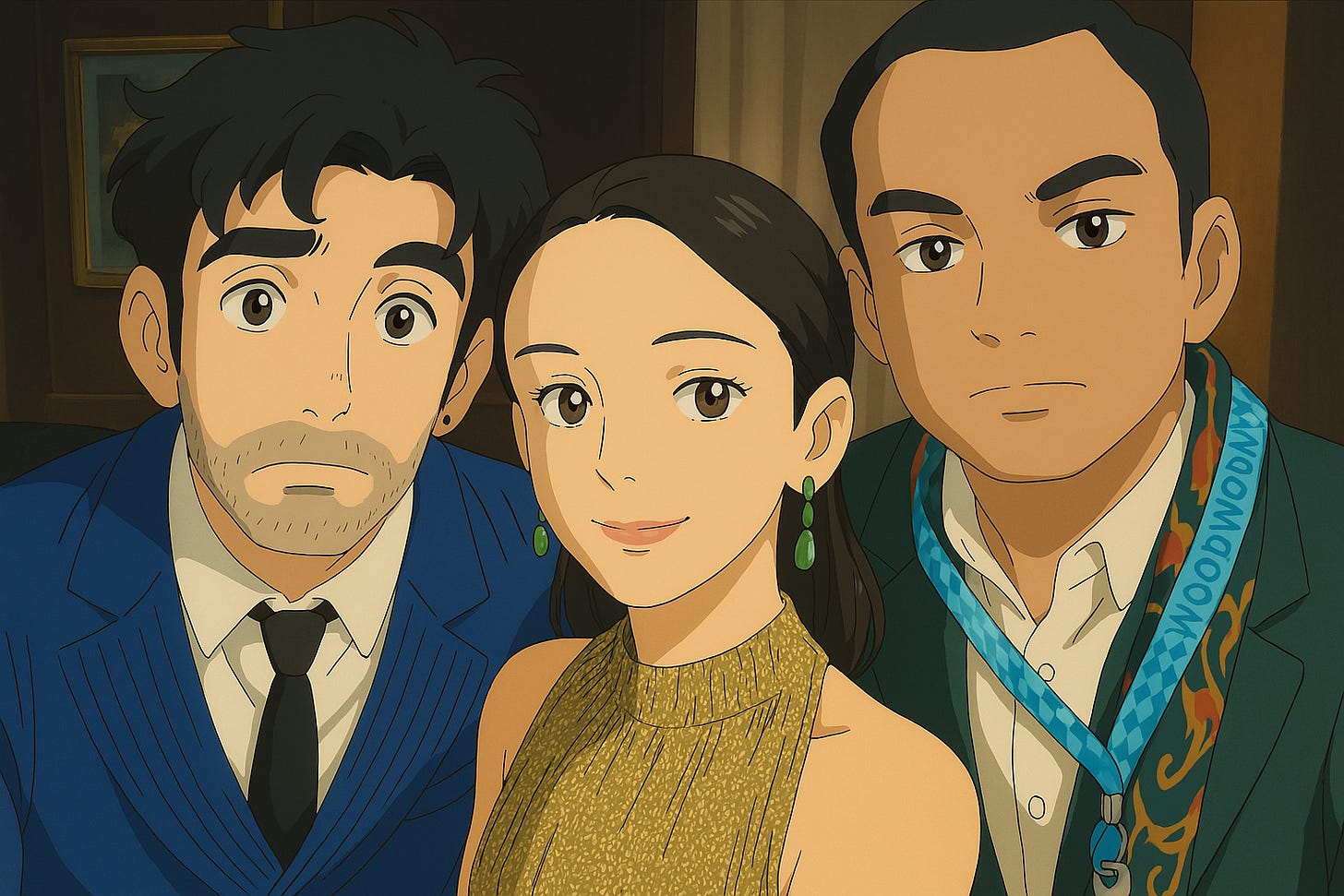
Why do you not enjoy writing, yet turn out 4k words of gas substack?